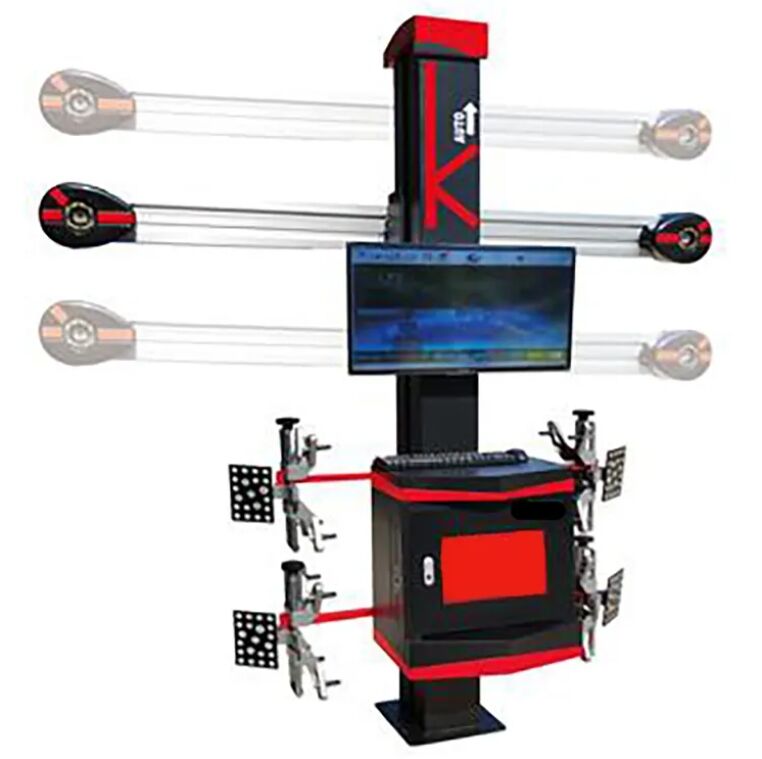Bevezetés
Az autóemelők átalakították, hogyan közelítjük meg a járműkarbantartást. Ezek az eszközök időt és energiát takarítanak meg azáltal, hogy megemelik a járműveket a könnyebb hozzáférés érdekében. A korai tervek egyszerűek voltak, de utat nyitottak a fejlettebb rendszerek előtt. Az autóemelők fejlődése az innovációt tükrözi, biztonságosabbá és hatékonyabbá téve a javításokat a szakemberek és a lelkesedők számára egyaránt.
Korai innovációk az autóemelők fejlődésében
Primitív módszerek és kihívások a járműkarbantartásban
A járműkarbantartás korai napjaiban egy autó megemelése ijesztő feladat volt. Alapvető eszközökre kellett támaszkodnod, mint például rámpák, fa blokkok vagy akár kézi munka a járművek megemeléséhez. Ezek a módszerek nemcsak időigényesek voltak, hanem veszélyesek is. A megfelelő felszerelés hiánya gyakran balesetekhez vezetett, ami kockázatossá tette a javításokat a szerelők számára. El tudod képzelni, milyen nehéz volt hozzáférni egy autó aljához ilyen primitív technikákkal.
Az ebben az időszakban elérhető eszközök korlátozottak voltak a nehéz járművek támogatásában. Ahogy az autók egyre elterjedtebbé váltak, úgy nőtt a jobb emelési megoldások iránti igény. A szerelők folyamatosan küzdöttek a stabilitással és a hatékonysággal. Ezek a kihívások kiemelték az innováció fontosságát a területen. Az autóemelők fejlődése itt kezdődött, a biztonságosabb és megbízhatóbb eszközök iránti kereslet által hajtva.
Az Első Mechanikai Autóemelők és Korlátaik
Az első mechanikai autóemelők jelentős előrelépést jelentettek. Ezek a korai emelők egyszerű mechanizmusokat használtak, mint például csavaros emelők vagy kötélpályás rendszerek. Most már kevesebb fizikai erőfeszítéssel emelhettél egy járművet. Azonban ezeknek a terveknek megvoltak a maguk problémái. Lassúak voltak, manuális működtetést igényeltek, és hiányzott belőlük a nehezebb járművekhez szükséges stabilitás.
Korlátozásaik ellenére ezek a mechanikus emelők megalapozták a jövőbeli fejlődéseket. Bevezették a járművek hatékony emelésének koncepcióját, utat nyitva a hidraulikus és pneumatikus rendszerek előtt. Az autóemelők fejlődése nagymértékben köszönhető ezeknek a korai innovációknak, mivel ők teremtették meg a színpadot a ma látható kifinomult rendszerek számára.
Hidraulikus és Pneumatikus Rendszerek: Technológiai Ugrás
A Hidraulikus Rendszerek Bevezetése a 20. Században
A 20. század forradalmi változást hozott a járműkarbantartásban. A hidraulikus rendszerek forradalmasították az autóemelőket azáltal, hogy bevezették a folyadékenergiát. Ezek a rendszerek nyomás alatt álló folyadékot használtak az erő generálására, megkönnyítve a nehéz járművek emelését. Többé nem kellett a manuális erőre vagy instabil mechanikai eszközökre támaszkodni. A hidraulikus autóemelők simább működést és nagyobb emelési kapacitást kínáltak.
Ez az innováció számos kihívást kezelt, amellyel a mechanikusok korábbi tervezéseik során szembesültek. A hidraulikus emelők lehetővé tették, hogy a járműveket gyorsabban és jobb stabilitással emeljék. Kompakt kialakításuk miatt a korlátozott térrel rendelkező garázsokhoz is alkalmasak voltak. A 20. század közepére a hidraulikus technológia a gépkocsiemelők szabványává vált, megalapozva a további fejlesztéseket.
Kulcsfontosságú szabadalmak és innovációk, amelyek formálták az ipart
Számos kulcsfontosságú szabadalom döntő szerepet játszott a gépkocsiemelők fejlődésének alakításában. A feltalálók a biztonság, a hatékonyság és a használhatóság javítására összpontosítottak. Például a hidraulikus dugattyús rendszer kifejlesztése lehetővé tette a járművek precíz emelését. Egy másik jelentős innováció a ollós emelő kialakítása volt, amely jobb stabilitást biztosított és kevesebb padlótérre volt szüksége.
Ezek a szabadalmak nemcsak a funkcionalitást javították, hanem a gépkocsi emelőket is hozzáférhetőbbé tették a kisebb műhelyek számára. Sok modern funkció, mint például a állítható emelőkarok és a zármechanizmusok, visszavezethető ezekre a korai innovációkra. Ezek teremtették meg az alapot a mai bonyolult rendszerekhez.
A pneumatikus rendszerek szerepe a hatékonyság növelésében
A pneumatikus rendszerek egy újabb hatékonysági réteget adtak a gépkocsi emelőknek. Ezek a rendszerek sűrített levegőt használtak az energia előállítására, gyorsabb és energiahatékonyabb alternatívát kínálva a hidraulikus emelők számára. A pneumatikus emelőket minimális erőfeszítéssel lehetett működtetni, így ideálisak voltak a nagy forgalmú műhelyek számára.
A pneumatikus technológia olyan funkciókat is bevezetett, mint az automatikus zárás és a gyorskioldó mechanizmusok. Ezek a fejlesztések javították a biztonságot és csökkentették a javításhoz szükséges időt. Míg a hidraulikus rendszerek továbbra is domináltak, a pneumatikus emelők értékes lehetőséget kínáltak bizonyos alkalmazásokhoz. Ezek a technológiák együtt jelentős ugrást jelentettek az autóemelők fejlődésében.
Modern autóemelők: Biztonság, okos technológia és fenntarthatóság
Fejlett biztonsági funkciók a kortárs emelőkben
A modern autóemelők soha nem látott módon helyezik előtérbe a biztonságodat. A gyártók olyan funkciókat integráltak, mint az automatikus záró rendszerek, túlsúly érzékelők és lengéscsillapító mechanizmusok. Ezek a fejlesztések biztosítják, hogy a járművek stabilak maradjanak a karbantartás során. Például az automatikus záró rendszerek azonnal aktiválódnak, miután az emelő elérte a kívánt magasságot, megakadályozva a véletlen leesést. A túlsúly érzékelők figyelmeztetnek, amikor a súly meghaladja az emelő kapacitását, csökkentve a berendezés meghibásodásának kockázatát.
A biztonsági szabványok is javultak. Sok lift most már megfelel az ALI (Automotive Lift Institute) szabványoknak, amelyek megbízhatóságot garantálnak. Ezek a funkciók nemcsak védelmet nyújtanak, hanem növelik a munkád általános hatékonyságát is. Ezekkel az újításokkal a javításokra összpontosíthatsz anélkül, hogy aggódnod kellene a potenciális veszélyek miatt.
Okos technológia és automatizálás integrációja
Az okos technológia integrációja átalakította, hogyan lépsz kapcsolatba az autóemelőkkel. Sok modern lift most digitális vezérléssel, érzékelőkkel és akár mobilalkalmazás-kapcsolattal is rendelkezik. Nyomon követheted az emelő teljesítményét, beállíthatod a paramétereket, és közvetlenül a okostelefonodon kaphatsz karbantartási értesítéseket. Ez a szintű automatizálás csökkenti a manuális erőfeszítést és biztosítja a pontosságot.
Néhány emelő programozható magassági beállításokat is tartalmaz. Ez lehetővé teszi, hogy különböző feladatokhoz specifikus magasságokat állítson be, ezzel időt takarítva meg és javítva a pontosságot. Az okos technológia felhasználóbarátabbá és hatékonyabbá tette az autóemelőket, tükrözve az autóemelők folyamatos fejlődését kifinomult eszközökké.
Energiahatékony és környezetbarát tervezés
A fenntarthatóság kulcsfontosságú fókuszponttá vált a modern autóemelők tervezésében. Az energiahatékony motorok és hidraulikus rendszerek kevesebb energiát fogyasztanak, csökkentve ezzel az üzemeltetési költségeit. Néhány emelő már biológiailag lebomló hidraulikus folyadékokat használ, amelyek minimalizálják a környezeti hatást.
A gyártók szintén elkezdték újrahasznosítható anyagok használatát az emelők építésében. Ez a megközelítés nemcsak a hulladék csökkentését szolgálja, hanem összhangban áll a globális erőfeszítésekkel is, amelyek a környezetbarát gyakorlatok népszerűsítésére irányulnak. Az energiahatékony és fenntartható autóemelők választásával hozzájárul a zöldebb jövőhöz, miközben hosszú távú megtakarításokat élvez.
Az autóemelők fejlődése átalakította a járműkarbantartást. Láttad, hogyan fejlődtek ezek az eszközök az alapvető rámpáktól a fejlett hidraulikus rendszerekig és okos technológiákig. Ezek az újítások javították a biztonságot és a hatékonyságot az autóiparban. A jövőbeni automatizálási és fenntarthatósági fejlesztések még nagyobb előrelépéseket ígérnek, amelyeket felfedezhetsz.

